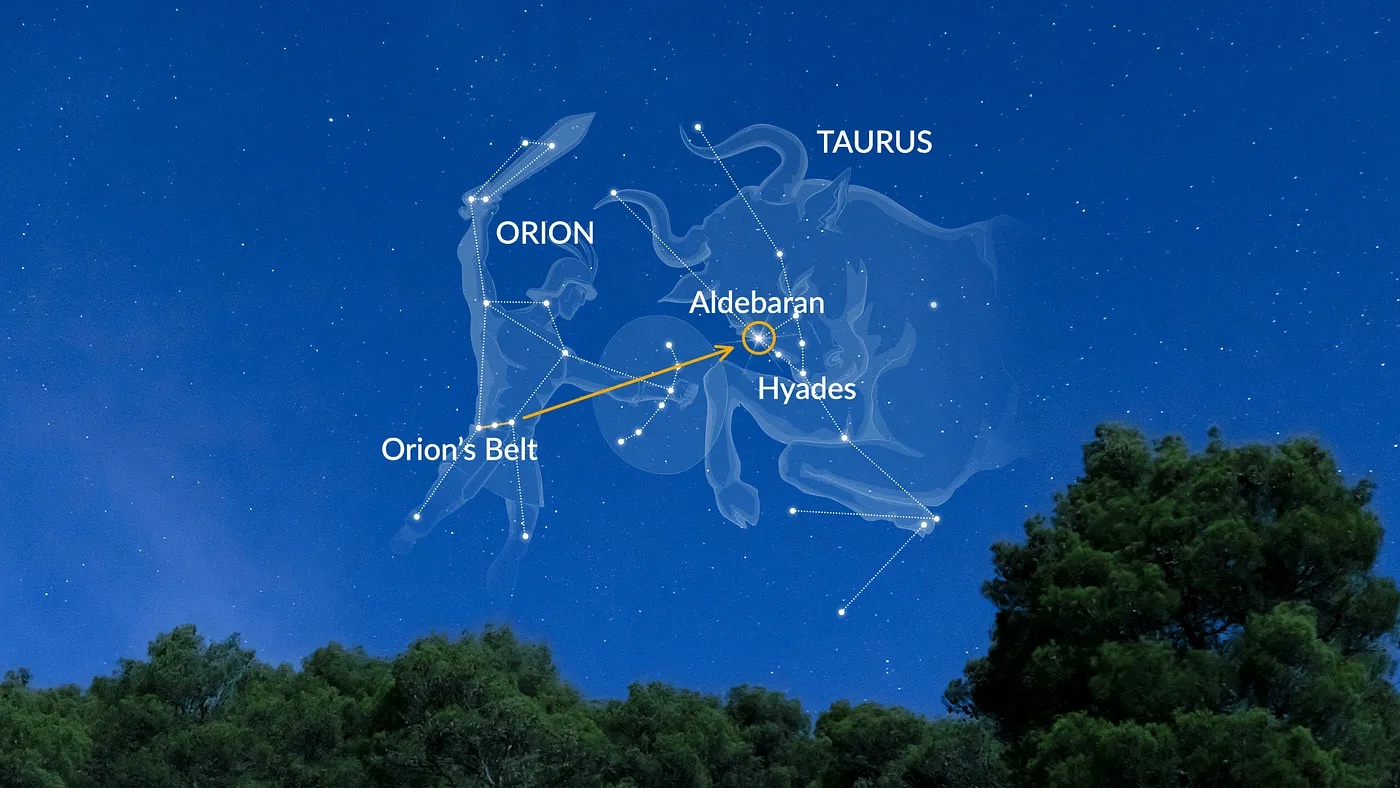Any clear winter night this month, look due south between 8:00 and 10:00 pm to spot the large “hour-glass” shape of Orion the hunter. In its middle 3 equally bright stars mark the belt around the waist of this hunter. Using those 3 stars as a pointer through them down and left to spot Sirius, the brightest star in the sky as seen from Earth, and part of the the constellation Canis Major; Orion’s bigger dog. Then using the 3 belt stars as a pointer in the opposite direction will lead our eyes to Taurus the bull; a distinct “V”-shaped zodiac constellation with a bright star, Aldebaran, of its own. This whole region around Orion is filled with many bright stars; fully 8 of the top 20 brightest stars we can see, making it perhaps the brightest sky of the year.
Though Saturn will begin to move out of sight this month, setting just 1 hour after sunset by the end of February, it will be close to Mercury on February 24th making a nice conjunction of 2 planets. Find a good clear view to the western horizon that night and look 30 to 45 minutes after sunset. Saturn will be just left of Mercury. Both will be very close to the horizon.
Venus is hard to miss above both Saturn and Mercury and may be seen for 3 hours after sunset. On February 1st look for a slim crescent Moon very close to Venus.
Jupiter is also very bright and can be seen all month high in the sky just above Aldebaran. A waxing crescent Moon will appear to form a line with Jupiter and Aldebaran on February 6th
If you have a telescope take the opportunity this month to study Jupiter as often as possible. Views of the giant planet will be rewarding.
Mars in the eastern sky will form a triangle with the top two stars of Gemini, Castor & Pollux, on February 1st. Mars itself will be visible all night and during the month Mars’ retrograde orbital motion will make it appear to move into the center of Gemini until late in the month; when it will appear to move backup toward Pollux.
This apparent reversal of motion is due to Earth’s faster orbital speed making Mars appear to move “backwards” for several weeks. It is a temporary illusion. In reality Mars always moves slower than Earth around the Sun in an elongated orbit counter-clockwise around the Sun.
Ground Hog day is on February 2nd and has no astronomical significance despite what the ground hog sees, but February 2nd does mark the exact mid-point between the Winter Solstice (Dec. 22nd) and Vernal Equinox (first day of spring March 23). Just a bit of trivia. February’s Full Moon is on February 12th.



Write a Letter to the Editor on this Article
We encourage readers to offer their point of view on this article by submitting the following form. Editing is sometimes necessary and is done at the discretion of the editorial staff.